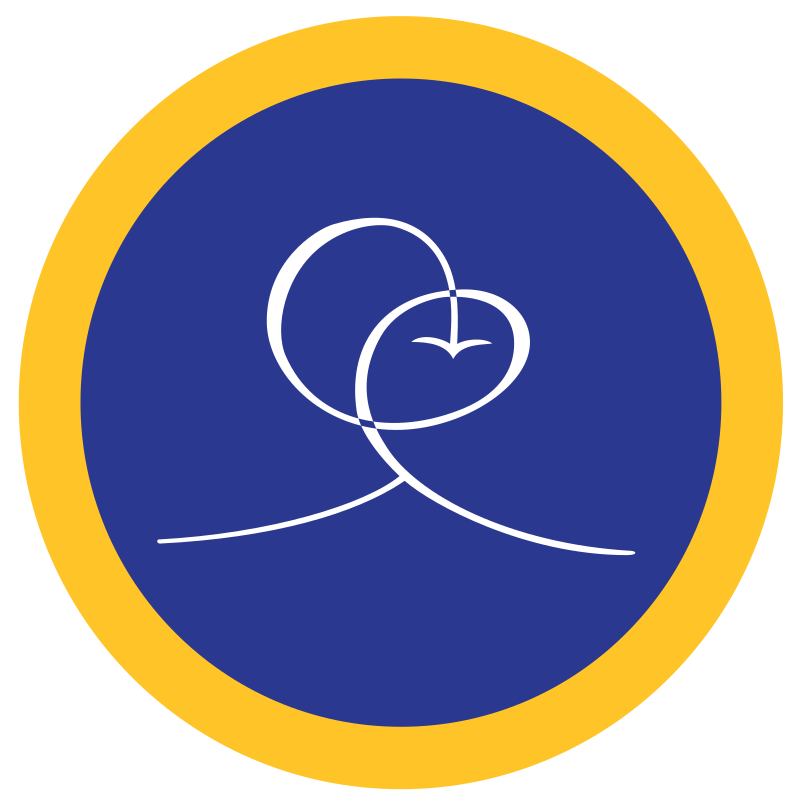
Found Heart
Jan 17, 2023I gazed through the backseat window at the rectangular head, torso, and limbs made of soiled metal and wood. The lonely human-sized figure jutted out of the mud, yellow grass, and polluted marshy water off the roadside. The juxtaposition of the eerie sculpture, industrial odors, and overcast weather contributed to my already withdrawn teenage angst. The family car Dad was driving was just one of the endless other vehicles on the highway, perhaps slowing down a bit to ponder the abstract sculpture, before continuing.
These impressions were from my fleeting glimpses of the metal-wood oddity in a forgotten part of northern California. Yet, as if lingering from an otherwise blurry dream, the elongated thing burned an imprint in my memory.
Junk Sculpture
A decade later, in my mid-twenties, I heard on the radio a famous musician describing a method of songwriting he called Junk Sculpture. This meant juxtaposing random lyric passages as if making a collage of thoughts. With free association, something evocative arranged itself from unlikely parts. My mind recalled the found-material anomaly I saw off the road.
The manner the musician described his method sounded a bit affected. Yet, I knew from my own visual art experience, there is an emergence, and innate pleasure, that comes from assembling random images, in my case sketches, layered paint, that takes on a life of their own. My childlike experiment was seeing how far the disparate elements can be juxtaposed before the invisible realm brought a unified creation from them. This also involved trusting what to discard. When my approach was too orderly, the creative flow felt sterile and calcified. When I trusted the process, I made space to allow surprise.
I didn’t, however, see how the Junk Sculpture metaphor related to my own life journey.
Personas
Thirty years after hearing the musician describe Junk Sculpture, I recognize a storage of lifetime identities I had accumulated. It seems that I have lived numerous roles, within one adult life.
The yoga master Paramhansa Yogananda cautioned people not to become psychological antiques. Upon reflection on his teaching, I have often asked myself how willing am I to continue a sustained effort to give away all cherished self-identifications of my ego.
If we want to expand now, something defunct must go. If I cling to a past success, hoping to reclaim it, I am sliding backward. My awareness, to the extent it is lubricated with regular meditation and engagement in service, is an adventure of letting go of malfunctioning behaviors and ideas. Notions that once fed my pride, and seemed to offer inner mobility, are now confining, sometimes even toxic.
The thought of myself as a lone material entity, like the inert sculpture I saw in the marsh decades ago, allows no room for inspiration. My gifts are as good as inoperable if I measure worth based solely on what I can perceive in the outer world. This reminds me of Jesus’s saying, “Let the dead bury the dead.”
I have behaved in manners that make me cringe now. I have been an actor, usually not realizing it, who portrayed a variety of roles in my life. Sometimes adrenalized by the need to be in the spotlight, other times playing small. Each of the self-limiting roles got suffocating, at some point. The word personality, after all, is from the Latin word persona – theatrical “mask.”
At night, after meditation, before going to bed, I give everything, including my perceived accomplishments and disappointments, and future concerns, to the higher realm, as if into a blazing fire for purification. As I do this, I observe irritating remnants of self-identities, and holdovers from previous personas. I do my best to release every one of them. Yet like contraptions I thought were dismantled and given away, they at times inexplicably turn on and make noises again.
It is not enough, of course, to empty out the relics and leave the rest up to grace to handle.
Found Heart
Yogananda also said, if we want to experience inner happiness, we must include other people’s happiness with our own. Therefore, cleansing the rust of the heart, and being unconditionally loving, are key to being lifted out of the scrap heap of old karma. This love is not only cultivated but also uncovering what is buried beneath the surface. Just as the Tin Man in the Wizard of Oz realized he already had a loving heart.
By doing my best to practice, however imperfectly, these teachings of Yogananda, something astonishing is occurring.
In the stillness of meditation, I have received glimpses of an underlying creative power, behind and beyond, the outer moving parts of my psyche. I have also been graced to witness latent skills; talents brought back to life. This has only emerged when I am willing to be in service to Spirit and to others. When I apply what I am guided to do, it feels as if I am art material that the higher realm is animating in new unexpected ways to share.
While I do notice found parts brought to new life, the feeling is not the metal-wood mud-bound sculpture I saw off the highway more than forty years ago. The qualities are more musical, like being an instrument, a part of a melody, in an endless masterwork I cannot grasp. To the extent that I have a receptive heart, the more I experience the light of a Divine Artist creating through me.


